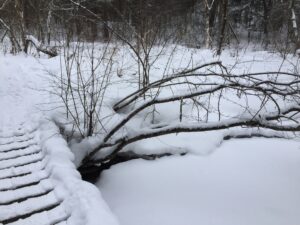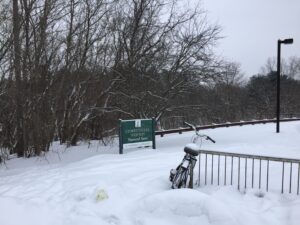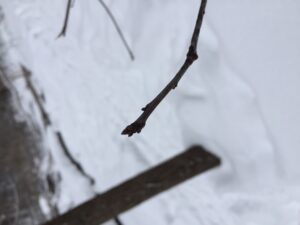Happy February!

Kampf, M. M. (2019, February 4). Snow Covered Bridge [Digital image].
This semester, I will be visiting a new location in Burlington throughout the semester. This spot can be found five or so minutes down the trail in Centennial Woods on the bridge above a small stream (pictured above). I visited this site a few times last semester and it feels just as homey as my previous location on the waterfront, but just a little bit closer to campus. From my dorm on Central Campus, it takes roughly fifteen minutes to get to by walking down Carrigan Drive, then following Catamount Drive until reaching the trailhead. Below you can find the location on Google maps:
Its coordinates are:
https://goo.gl/maps/2AhzcrCTPuB2

Kampf, M. M. (2019, March 6). Winter Entrance to Centennial Woods [Digital image].
Surrounding my phenology site, you could find plants like goldenrod and Joe-Pye weeds. In addition, there were a few red maple trees, identified by smooth, red buds with three bundle scars (see below).

Kampf, M. M. (2019, March 6). Red Maple Tree Buds [Digital image].
There was also a paper birch, identified by its bark, and eastern white pines.
By the time I finished taking pictures of tree bark and buds, my phone had died, leaving me without a camera. Animal tracks that I found included many dog prints that followed the trail (with their owners) and occasionally other evidence on the snow on the side of the trail. Also, I found small tracks whose track pattern was that of a diagonal walker. They were very small with a short stride, leading me to believe it was a house cat. There were so many people on and off the trails of Centennial Woods that made for small areas of untouched snow difficult to identify wildlife.


Recent Comments